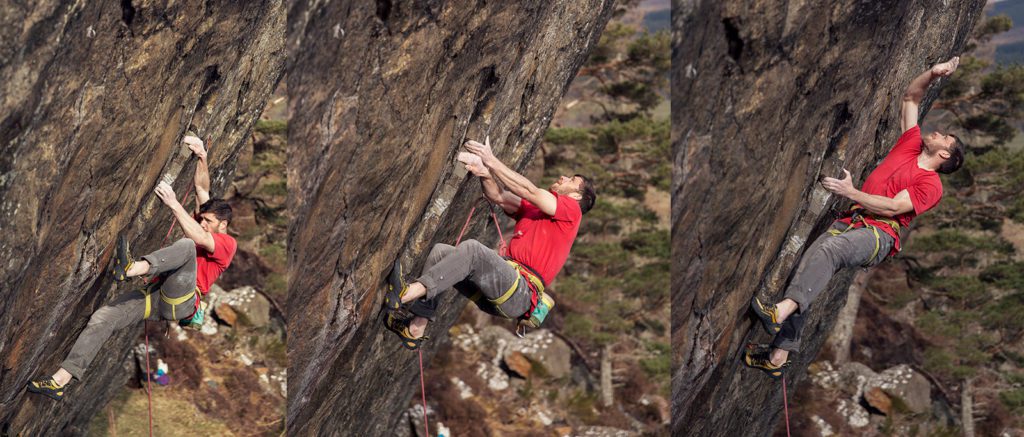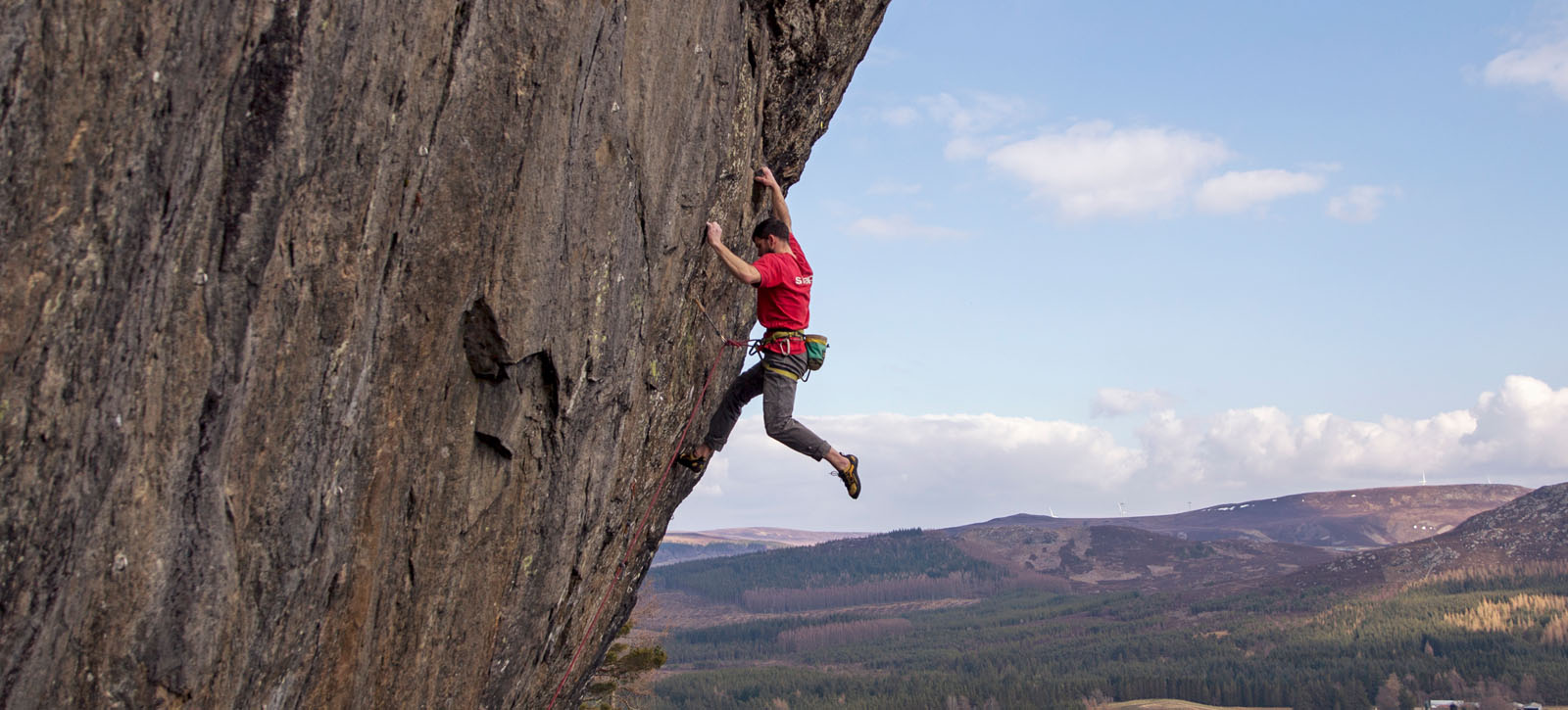24.07.19
The ABCD of why bouldering makes you a better route climber…
Experienced route-climber and TCA Director, Alan Cassidy shares his wisdom on why bouldering is a great training activity for those focused on roped projects. Having climbed well over 300 grade 8 sport routes, he should know!
There is an old adage in rock-climbing which states that the best training for climbing is climbing. Even today, in the era of data-driven fingerboard protocols, functional fitness training and designer chalk products that promises ultimate friction, the best route climbers are still the ones who are: (a) having the most fun (of course), (b) know how to move across the wall well, (c) can pull down on small holds and crank out hard moves and (d) can keep on cranking for a long duration and the only real way to get all 4 of these elements is to do lots of climbing specific training.
Whether you are a trad climber, sport climber, indoor route climber, boulderer planning on making the transition to route climbing or any blend of all the above it may surprise you to hear that time on the bigger walls of your local roped climbing centre are not the only place to practice for route climbing. In fact, it makes a lot of sense to do most of your preparation for route climbing on the much shorter walls at your local bouldering wall. Let me explain.
1. Have more fun!
Route climbing is, obviously, great, but bouldering is more fun. Period. What better way to get better than in a sociable environment where the training time flies by thanks to great camaraderie, banter and lots of encouragement. Training is all about long term consistency, and time and training in a group environment yields way better results when it comes to being motivated to show up.
TRAINING TIP: Climb with other people and spur each other on to climber better.
B) Move across the wall well
While route climbing involves ropes, gear and more complexity, if you don’t know how to climb, you don’t know how to route climb. Skills and techniques are best drilled in the safe simple environment through repetition. There is no getting around the fact that there is more experimentation with technique possible on a bouldering wall where it is easier to push your movement comfort zone, without adding additional stress over heights and safety.
TRAINING TIP: Try moves at your limit, without worrying about reaching the top of everything, learn from experimentation and spend time thinking about how the movements work and how they feel.
C) Pull down on small holds and crank out hard moves
When the climbing on a route gets tough, and it will, having the reserve strength and physical capacity to do the moves is the limiting factor. You simply cannot build this capacity as effectively anywhere else than on the bouldering wall. Strength is best trained fresh, not after 15m of climbing.
TRAINING TIP: Keep pushing for that harder climb, you can’t pull harder if you don’t try to pull harder!

But what if you need to do the hard moves after 15m of climbing? Won’t you need to do some stamina training?
D) Keep on cranking
Without a doubt, route climbing is about doing moves in a state of fatigue due to the volume of climbing. And while at first, it might seem like the roped wall is the only place to do this the reality is that most people will do WAY MORE climbing in their bouldering sessions than they do when they have to belay, change over with their partner and all the other faffing that comes with roped climbing. If you haven’t experienced how pumped you can get at the boulder wall, then try reducing the amount of rest you have between boulder problems or start trying to chain problems together. You will soon see that the home of fitness is also on the boulder wall.
TRAINING TIP: There are endless ways to train endurance on the bouldering wall from high-intensity intervals on boulder problems (climb on a circuit or two below your max for example 3-5 sets of 3-5 problems with 1min rest between problems and 5 mins between sets). to going long, slow and steady to build aerobic endurance by trying to stay on the wall continuously from between 6 and 20 mins at a time.
At the end of the day, yes, you will always need to spend some time with a rope on, but with your arsenal of skills tuned up on the bouldering wall, this time can be spent more effectively meaning than when you do tie-in in front of your dream route you will be ready and able to take advantage of the opportunity to climb it.
Happy climbing!
Photos of Alan Cassidy on The Force (8b) at Brin Rock by Chris Houston Photography



